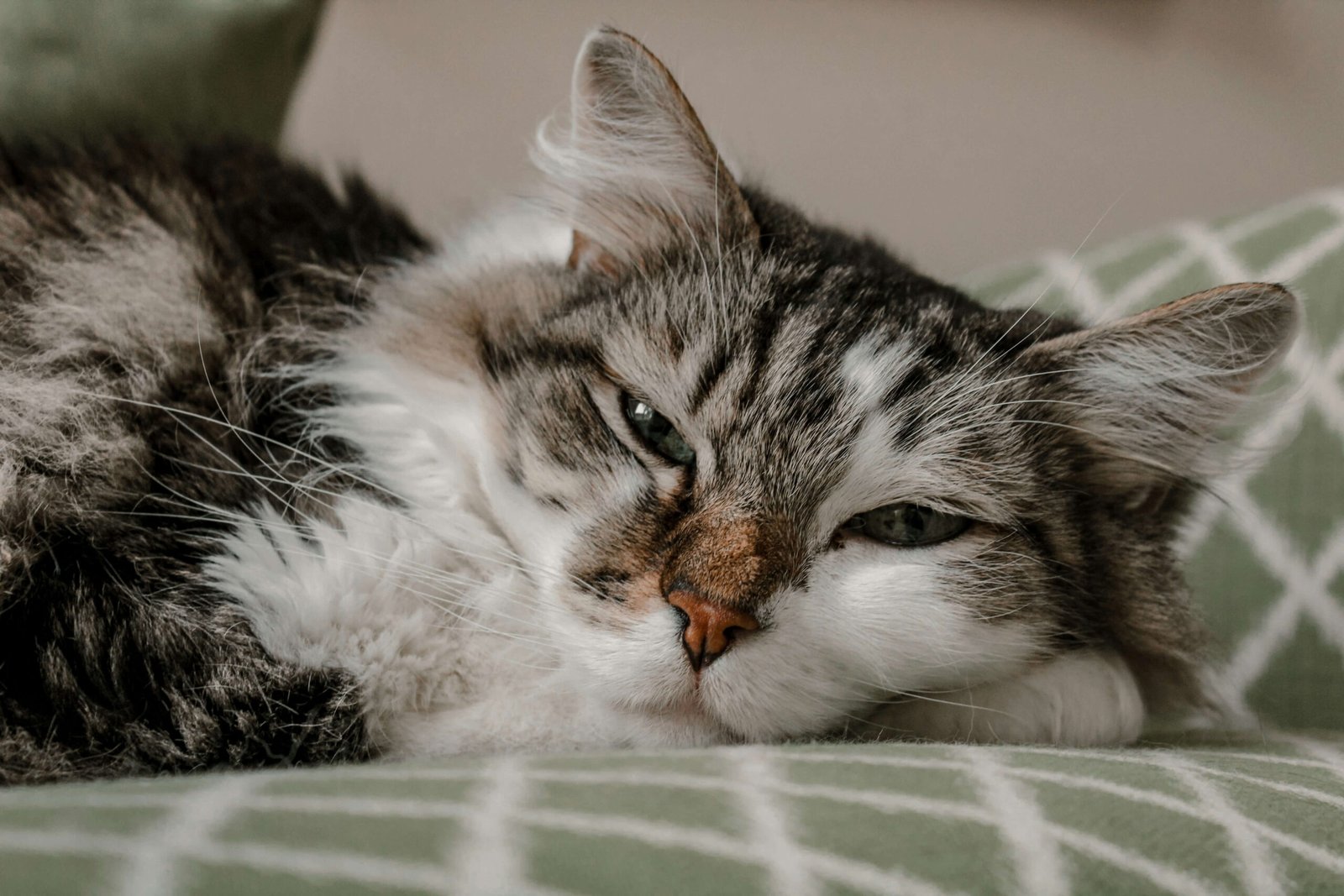Do Cat Whiskers Grow Back? Understanding the Mystery of Feline Whiskers
Cat whiskers are far more than just cute facial features—they’re a vital sensory tool that helps cats navigate their environment. These specialized hairs, also known as vibrissae, play a crucial role in a cat’s ability to detect changes in their surroundings. But what happens if a whisker falls out or gets damaged? Many cat owners wonder, “Do cat whiskers grow back?” The good news is that whiskers do regenerate, but the process involves some fascinating biological mechanisms.
In this blog post, we’ll explore everything you need to know about cat whiskers, from their function to their regrowth and how to care for them properly. Let’s dive into the world of feline whiskers and uncover the answers to your burning questions!
The Role of Whiskers in a Cat’s Life
Whiskers are incredibly important for a cat’s daily activities, acting as a built-in radar system. Here’s how they contribute to your cat’s well-being:
Spatial Awareness
Whiskers help cats determine whether they can fit through narrow spaces by detecting the width of openings.Sensory Perception
They act as tactile sensors, picking up vibrations and changes in air currents to help cats “see” in the dark.Hunting Assistance
Whiskers allow cats to detect the movement of prey, even when it’s too close for their eyes to focus.Mood Indicators
The position of a cat’s whiskers can reflect their mood—relaxed whiskers mean calmness, while flattened whiskers signal fear or aggression.Balance and Coordination
Whiskers aid in maintaining balance, especially when navigating narrow surfaces or jumping.
Understanding the importance of whiskers highlights why their regrowth is essential for a cat’s overall health and functionality.
What Happens When a Whisker Falls Out?
If your cat loses a whisker, don’t panic—it’s a natural process, much like shedding fur. However, there are key points to keep in mind about whisker loss and regrowth:
Natural Shedding
Cats occasionally shed whiskers as part of their normal growth cycle, similar to how humans lose hair.Temporary Disorientation
Without a full set of whiskers, cats may experience slight disorientation or difficulty navigating tight spaces.Regrowth Timeline
Whiskers typically take a few weeks to several months to grow back, depending on the cat’s age and health.No Permanent Damage
As long as the follicle isn’t damaged, the whisker will regrow naturally without intervention.Avoid Trimming Whiskers
Never trim or cut a cat’s whiskers, as this can impair their sensory abilities and cause stress.
While whisker loss is generally harmless, ensuring your cat’s environment supports their recovery is key to minimizing any inconvenience.
Check this guide 👉Why Did My Cats Whisker Fall Out? Best 7 Health Tips!
Check this guide 👉The Fascinating World of the Cat Nose: Best 7 Expert Tips!

Aspect | Details About Cat Whiskers |
|---|---|
Function | Helps with spatial awareness and navigation |
Growth Cycle | Whiskers shed and regrow naturally over time |
Sensory Role | Detects vibrations and changes in surroundings |
Regrowth Duration | Takes weeks to months depending on the cat |
Care Tips | Avoid trimming or damaging whiskers |
How to Support Healthy Whisker Growth
While whiskers grow back naturally, there are ways to support your cat’s overall health and ensure optimal regrowth. Here are some tips:
Provide a Balanced Diet
Ensure your cat’s diet includes essential nutrients like protein, vitamins, and minerals to promote healthy hair and whisker growth.Minimize Stress
Stress can impact a cat’s health, including their coat and whisker condition. Create a calm and safe environment for your pet.Regular Grooming
Gently brush your cat’s fur to remove loose hairs and debris, which indirectly supports healthy skin and whisker follicles.Check for Skin Issues
Monitor your cat’s skin for signs of irritation or infection, as these can affect whisker growth.Avoid Overstimulation
Refrain from excessive petting or pulling on your cat’s whiskers, as this can damage the follicles.
By following these steps, you can help your cat maintain strong, healthy whiskers throughout their life.
Common Myths About Cat Whiskers
There are many misconceptions about cat whiskers, and debunking these myths can help you better understand your feline friend. Here’s what you need to know:
Myth: Whiskers Are Just Decorative
Fact: Whiskers serve critical sensory functions and are far from purely aesthetic.Myth: Cutting Whiskers Won’t Harm Cats
Fact: Trimming whiskers can disorient cats and impair their ability to navigate safely.Myth: All Cats Have the Same Number of Whiskers
Fact: Most cats have 12 whiskers on each side of their face, but variations exist among breeds.Myth: Whiskers Can’t Regrow
Fact: Whiskers do grow back after falling out, provided the follicle remains intact.Myth: Whisker Fatigue Is a Made-Up Condition
Fact: Whisker fatigue, caused by overstimulation of whiskers (e.g., narrow food bowls), is a real issue that can stress cats.
Separating fact from fiction ensures you provide the best care for your cat’s unique needs.
Signs of Healthy Whiskers
Healthy whiskers are a reflection of your cat’s overall well-being. Here are some indicators that your cat’s whiskers are in good condition:
Uniform Length
Whiskers should be roughly the same length on both sides of the face, indicating balanced growth.Smooth Texture
Healthy whiskers feel smooth and strong, without signs of brittleness or breakage.Natural Shedding
Occasional shedding of whiskers is normal and shows that the growth cycle is functioning properly.No Visible Damage
Whiskers should not appear frayed, split, or discolored, as these could indicate underlying health issues.Responsive Movement
Healthy whiskers respond quickly to touch or changes in the environment, demonstrating their sensory function.
By monitoring these signs, you can ensure your cat’s whiskers remain strong and functional, supporting their natural abilities.
How to Prevent Whisker Stress
Whisker stress, also known as whisker fatigue, occurs when a cat’s whiskers are overstimulated. Here’s how you can prevent this condition:
Use Wide, Shallow Bowls
Opt for bowls with low sides to avoid unnecessary contact with your cat’s whiskers during meals.Provide Whisker-Friendly Toys
Choose toys that don’t require excessive whisker stimulation, such as soft plush toys or balls.Minimize Forced Interactions
Avoid petting or touching your cat’s whiskers excessively, as this can lead to discomfort.Create a Calm Environment
Reduce loud noises and sudden movements that might overstimulate your cat’s sensitive whiskers.Observe Behavioral Changes
Watch for signs of stress, such as pawing at food bowls or avoiding eating, which may indicate whisker fatigue.
Taking these steps can help protect your cat from whisker-related stress and ensure their comfort.
Fun Facts About Cat Whiskers
Cat whiskers are fascinating features with many intriguing aspects. Here are some fun facts to deepen your appreciation for them:
Whiskers Are Not Just on the Face
Cats also have whiskers above their eyes, on their chin, and even on the backs of their front legs.Each Whisker Is Rooted Deeply
Whisker follicles are embedded three times deeper than regular hair follicles, making them highly sensitive.Whiskers Can Change Color
As cats age, their whiskers may turn gray or white, similar to how human hair changes with time.They Reflect Emotions
A cat’s whiskers can reveal their emotional state—relaxed whiskers mean calmness, while stiff whiskers signal alertness.Whiskers Help Cats “See” in the Dark
By detecting air currents and vibrations, whiskers allow cats to navigate pitch-black environments with ease.
These fun facts highlight the incredible complexity and importance of whiskers in a cat’s life, making them even more remarkable.
Frequently Asked Questions About Cat Whiskers
Do cat whiskers grow back if they fall out?
Yes, whiskers naturally grow back as long as the follicle isn’t damaged.
How long does it take for whiskers to regrow?
It typically takes a few weeks to several months, depending on the cat’s health and age.
Should I trim my cat’s whiskers?
No, trimming whiskers can disorient your cat and harm their sensory abilities.
What causes whiskers to fall out?
Whiskers fall out naturally during shedding cycles or due to external factors like injury or poor health.
Can whisker fatigue affect my cat?
Yes, whisker fatigue occurs when whiskers are overstimulated, often from narrow food bowls or frequent touching.
Caring for Your Cat’s Whiskers: A Vital Part of Their Well-Being
Cat whiskers are an incredible feature that plays a crucial role in your feline friend’s daily life. From aiding in navigation to reflecting their mood, whiskers are far more than meets the eye. While they do grow back if lost, it’s essential to support their natural regrowth by providing proper care and minimizing stress. By understanding the significance of whiskers and dispelling common myths, you can ensure your cat remains happy, healthy, and fully equipped to explore their world. So, the next time you marvel at your cat’s whiskers, remember—they’re not just adorable; they’re indispensable!
Understanding Bone Supplement for Cats: Best 7 Expert Tips! – Safe, vet-approved guidance for strong feline bones & balanced nutrition.
Bone Supplement for Dogs: Best 7 Expert Tips! – Expert guide to calcium, collagen & bone health for every life stage.
Understanding Can Cats Get Sunburn: Best 7 Expert Tips! – Protect your feline from UV damage with vet-backed prevention strategies.
How to Train a Seizure Alert Dog: Best 7 Expert Tips! – Learn expert-backed steps to nurture natural instincts into reliable, life-saving seizure alerts.





